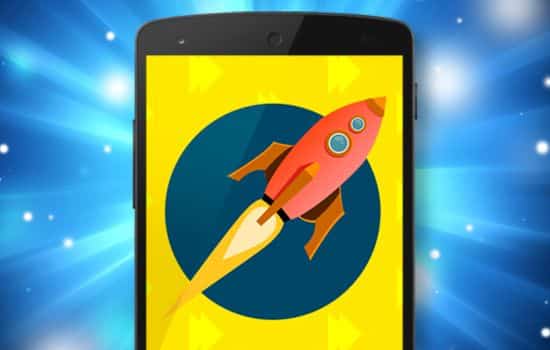Ads
Music has become an essential part of our daily lives, accompanying us in the most diverse moments, from long walks to endless journeys.
But what happens when you don't have an internet connection? Spotify has the perfect solution so you can enjoy your favorite playlists without interruptions, wherever you are.
In this post, we'll explore how to make the most of Spotify's download feature to listen to your favorite songs offline.
You'll learn how to configure your playlists, optimize storage on your device, and ensure an uninterrupted music experience, even in the most remote locations.
Ads
Discover the benefits of always having your music at your fingertips, without worrying about data usage or network coverage.
See also:
- Connect with Easy WIFI
- Pocket Rosary: Faith in Motion
- Unique Adventures
- Find out what animal you would be
- Discover the 10 Powerful Thirsty Ones!
Whether you love current hits, classic classics, or personalized playlists, Spotify gives you the freedom to enjoy it all, whenever and wherever you want.
Ads
How to download your favorite songs on Spotify for offline listening?
Did you know that Spotify has an amazing feature that lets you enjoy your favorite playlists offline? Yes, that means it doesn't matter if you're on a plane, on a mountain, or in a remote location without a signal; your music will always be with you. Downloading songs on Spotify is super easy, but before you start, make sure you have a Premium account, as this feature isn't available for free accounts.
Setting up Spotify for downloads
First, make sure you have enough space on your device. Downloads take up storage, and depending on how many songs or playlists you choose, you may need several gigabytes of free space. Once you're ready, follow these steps:
- Open the Spotify app on your phone or computer.
- Find the playlist, album, or podcast you want to download.
- Activate the button "Discharge" (usually appears as a down arrow icon).
- Wait for the download to complete. The app will notify you when everything is ready.
And that's it! Now you can listen to your music without worrying about your connection. Just remember that downloaded songs will only be available while your Premium subscription is active.
What if I want to change my device?
If you decide to change your phone or computer, don't worry. Spotify allows you to download your songs to up to three different devices. However, you should remember that there's a limit of 10,000 songs per device. If you reach that limit, you can manage your downloads by deleting some older or less-used playlists to free up space.
| Content type | Available for download | Comments |
|---|---|---|
| Playlists | Yeah | Includes individual songs or compilations created by users and Spotify. |
| Albums | Yeah | Perfect for fans of a particular artist. |
| Podcasts | Yeah | Ideal for listening to episodes during long trips. |
Tips to save space when downloading music
Downloading music is great, but it can also fill up your device's memory quickly. Here are some tips to optimize your storage usage:
Choose the right audio quality
Spotify offers different audio qualities for its downloads: Normal, High, and Very High. If you're not an audiophile, you can opt for the Normal, as it takes up much less space. Changing this setting is very simple:
- Go to Configuration in the application.
- Select Download Quality.
- Choose the option you prefer.
Remember that while Very High quality offers incredible sound, it can take up more than twice the space of a Normal quality download.
Download only what you really need
Sometimes we want to download absolutely everything, but let's be honest: Do you really listen to every song on every playlist? Be selective and download only those playlists or albums you know you'll listen to frequently. You can also delete old downloads you no longer use. To do this:
- Open the downloaded playlist or album.
- Disable the button "Discharge".
- Spotify will automatically delete songs from your device storage.
How to keep your downloads active
One important thing to know is that Spotify requires you to connect to the internet at least once every 30 days to keep your downloads active. This is because the app needs to verify that your Premium subscription is still active. If you don't, your downloaded songs will automatically disappear from your device.
Recommendations for frequent users
If you use Spotify every day, you probably already connect to the internet regularly, so you won't have any issues with this requirement. However, if you're planning a long trip and know you won't have an internet connection for a while, be sure to log in before you leave to avoid any unpleasant surprises.
What happens if I lose my Premium subscription?
If you stop paying for your Premium subscription, your downloaded songs will be automatically deactivated. While they won't be deleted immediately, you won't be able to play them until you renew your plan. If you decide to return to Premium later, simply re-enable downloads for your favorite playlists or albums.
Exploring Spotify Offline: What Features Are Available?
When using Spotify in offline mode, not all features are available. Here's a breakdown of what you can and can't do:
| Function | Available offline | Comments |
|---|---|---|
| Playing downloaded songs | Yeah | Includes previously downloaded playlists, albums, and podcasts. |
| Search for new songs | No | You need an internet connection to browse the full Spotify catalog. |
| Creating playlists | Yeah | As long as you use songs already downloaded. |
| Sharing songs | No | Requires an internet connection to send links. |
As you can see, offline mode is great for listening to music, but not for browsing or sharing content. Still, it's a powerful tool for those times when an internet connection isn't guaranteed.
The magic of offline playlists
One of the best things about Spotify is its ability to create custom playlists. Imagine having a curated playlist for that road trip, your workout routine, or just relaxing at home—all while offline! Here are some tips to get the most out of your offline playlists:
Organize your playlists by occasion
Creating playlists specific to different moments in your life is a great way to keep everything organized. For example:
- Travel playlist: Songs that motivate you during long hours on the road.
- Playlist for training: Music with energetic rhythms to keep your spirits up.
- Relaxation playlist: Soft and calming songs to de-stress.
By keeping everything organized, you can download only the playlists you'll actually use, saving space on your device.
Update your playlists regularly
Just because a playlist is downloaded doesn't mean it has to last forever. Take a few minutes each week to update your lists with new songs or delete ones you no longer like. This not only keeps your music fresh, but also prevents you from taking up unnecessary space with songs you no longer listen to.

Conclusion
In summary, Spotify Premium offers an unparalleled experience for music lovers who want to enjoy their favorite songs offline. From the ability to download playlists, albums, and podcasts From the flexibility to listen across different devices, this feature ensures your music stays with you anywhere, whether you're on a long commute, at the gym, or on a hike in nature. Plus, the option to customize your downloads by adjusting audio quality and organizing your playlists by occasion is a key benefit for optimizing your device's storage.
While offline mode has some limitations, such as the inability to explore new songs or share content, it's still a fundamental tool for ensuring a smooth, uninterrupted music experience. Just remember to keep your downloads active by connecting to the internet at least once a month and managing your library efficiently.
Ultimately, making the most of this feature not only improves your Spotify experience, but also allows you to enjoy music in a personalized and worry-free way. So, what's waiting for? Create your playlists offline and enjoy an unparalleled listening experience? Bring your favorite moments to life with the magic of offline music!
Download the applications here:





